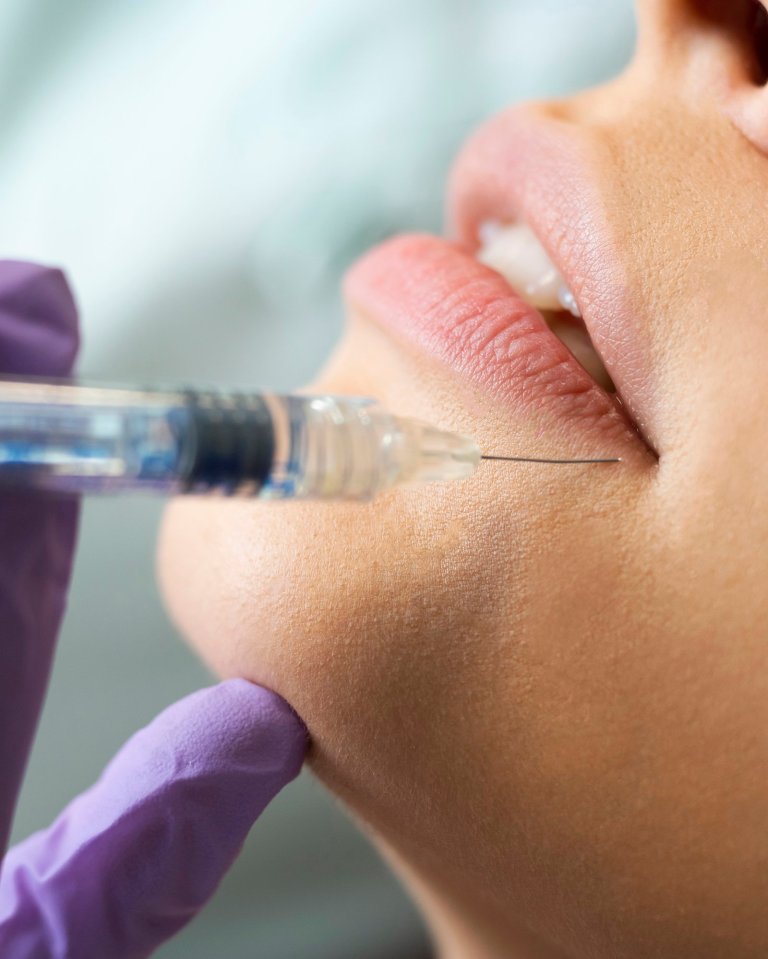Whether you’re due to a ‘top-up’ or are a total newbie to the world of injectables, it’s likely you’ll have heard plenty of stories about fillers. While some may hold a little truth, many are just there to scaremonger. Luckily, my own doctor, Dr Wassim TakTouk, owner of the TakTouk clinic in London (which recently won ‘Best Clinic 2023’), is here to separate fact from fiction.
Wondering whether your face changes forever after having fillers? Concerned you will look ‘fake’? Keep reading to hear Dr Wassim bust the most common myths about injectables.
Read next:
- Your ultimate guide to Botox, from where to get it done to how much it costs
- 3 things I learnt after having fillers for the first time
- The lowdown on fillers: essential things you need to know, according to a doctor
Filler myth one: When dermal fillers wear off, skin is stretched
“The practitioner should be able to assess changes in the face due to ageing. If you are replacing volume that was once there then it should not stretch skin in a way that it wasn’t before. Younger skin has the benefit of good collagen and elastin, and will have better recovery if the practitioner has overfilled.”
Filler myth two: When you start having fillers, you have to continue from there on out
“This isn’t true, unless you want to maintain the result. Filler is made of hyaluronic acid, so it is eventually broken down by the body and therefore needs topping up if you’d like to keep the same results.”
Filler myth three: Dissolving of fillers can permanently alter your face
“Nope; there can be some loss of natural hyaluronic acid in the process, but the body continues to make and replace its hyaluronic acid as usual.”
Filler myth four: Fillers are simply a vanity project
“It has been shown that dermal fillers have a place in the wellness space. Patients have reported a confidence surge when they have treatments, and when they feel better about themselves, it can have a positive impact on their relationships and at work.”
“Fillers can also be used for treating acne scarring, cleft lips or for disfiguring asymmetries, amongst other things.”
Filler myth five: You will look ‘fake’ having filler
“This is a common concern but like any treatment (including surgery), if it is done conservatively and with care, there shouldn’t be a risk of looking fake. We are also seeing a massive shift away from the ‘overfilling craze’ of the last 10 years, towards a more natural aesthetic.”
Filler myth six: Men shouldn’t have fillers because it’ll be obvious
“This is rubbish; they can benefit as much as from filler women do. Again, it’s important to recognise the key differences between the male and female face; there are specific adaptions the practitioner should make depending on the patient. In most cases, less is more.”
Filler myth seven: Complications of fillers are common
“Bruising, redness, swelling and soreness are the more common complications. Serious complications like vascular blockages are far less common and that’s why it’s important to research your practitioner and their qualifications carefully.”
Filler myth eight: All fillers are the same
“This one is absolutely not true; while they are all made of hyaluronic acid, there are several key differences, including the length of the chains of hyaluronic acid and the percentage of bonds present to hold them together.”
“It’s important to understand the different tissues being treated; for example I will only use Resilient Hyaluronic Acid (RHA) in areas of the face that are prone to movement as it is able to stretch and move with the face to blend in seamlessly. For firmer tissue replacement, I would need a thicker gel (for example, to project a recessed chin) and for this I need something like Ultradeep.”
“I only use Teoxane products, but as a rule, patients should get into the habit of asking what is injected into their faces!”










